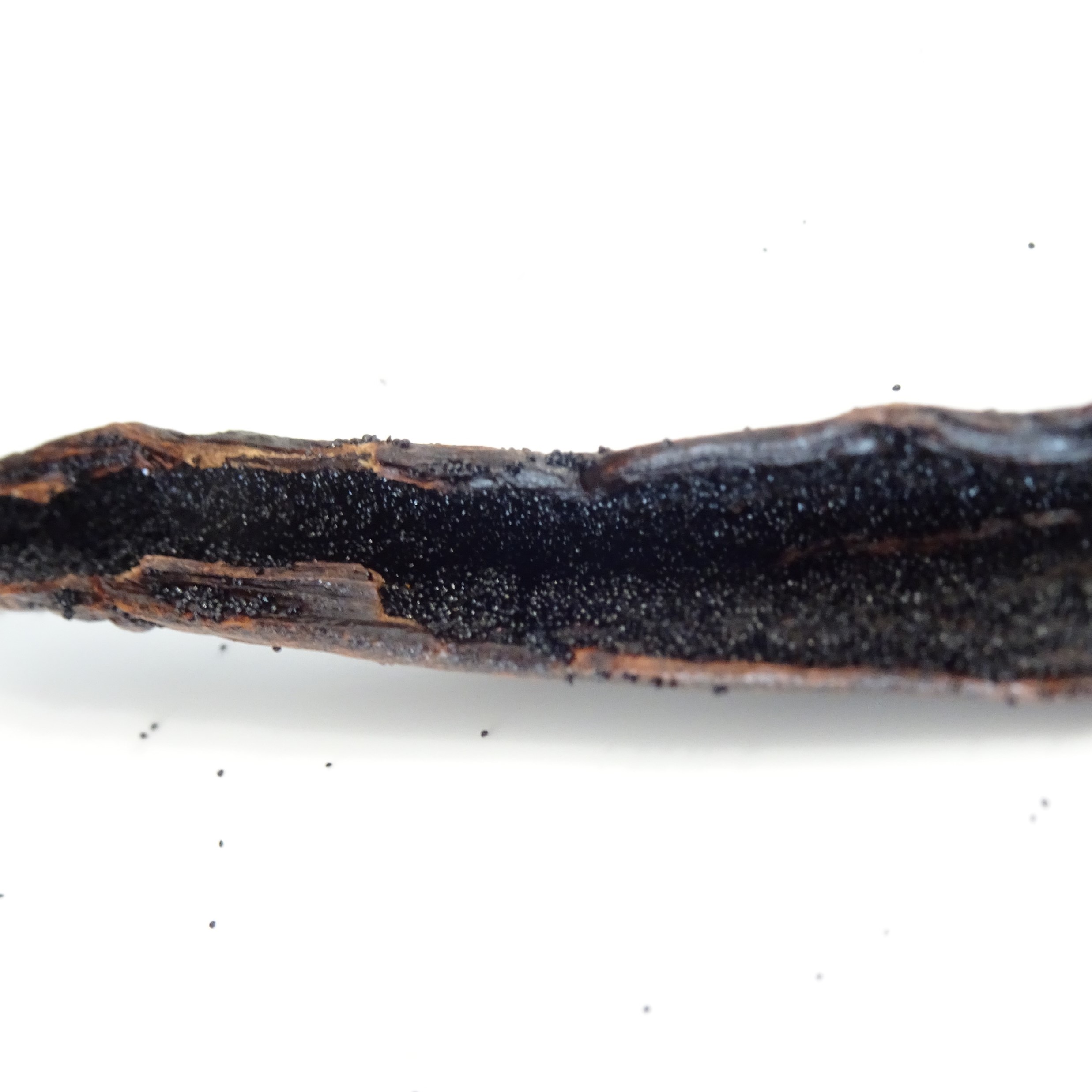Frequently Asked Questions
Here are some of the most common questions customers ask us about Mireia. If there’s anything not addressed here, please feel free to drop us an email at marketing@mireia.co or WhatsApp text us at +65 9898 6469
1. How do you say MIREIA?
The name Mireia (pronunciation: meer-AY-ah) is Spanish’s name, Catalan origin meaning “to admire”.
We admire the natural of the world and strongly believe, we can be healthier if we use products that come from nature, organic, original and fresh.
2. Is your company only do vanilla and coffee?
Our goal is to provide natural, organic and healthy products. Currently, we have various kinds of vanilla beans, vanilla paste, vanilla extract, vanilla sugar, and vanilla powder. We also provide quality coffee from Indonesia, gula aren, pandan powder, matcha, fruit powders and will give you more variety gradually. If there is a need that is being sought, you can contact us at marketing@mireia.co and tell us what material you need.
3. Do you do wholesale?
Mireia do wholesale as well as retail. We sell our products locally in Singapore and also export to foreign countries, some of the countries that have become our customers are Germany, France, Canada, Australia, Korea, Singapore, Malaysia, United Kingdom and United States. Our products can be purchased through online shopping on our website or if you buy a large quantity, you can contact us at marketing@mireia.co.
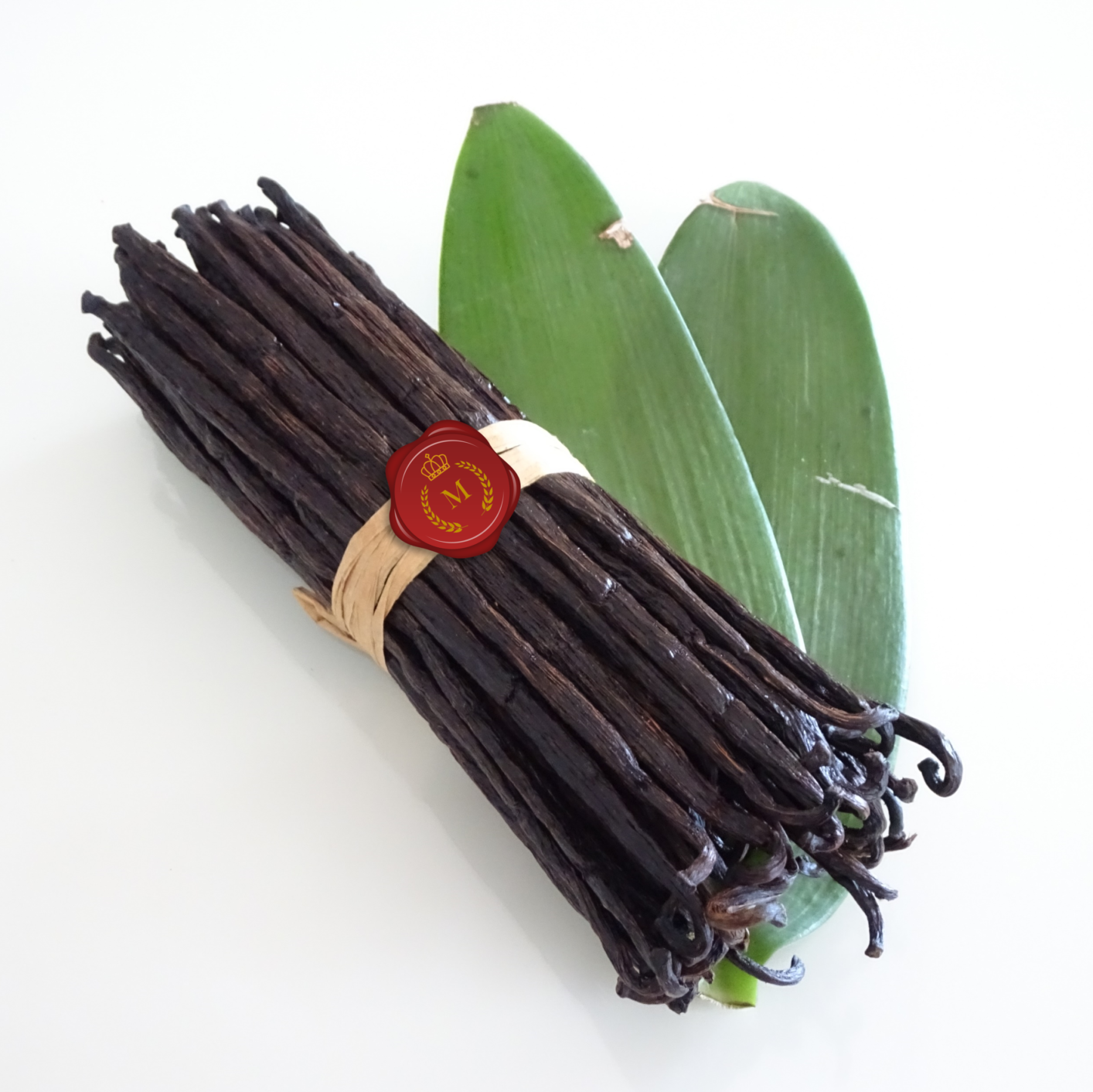
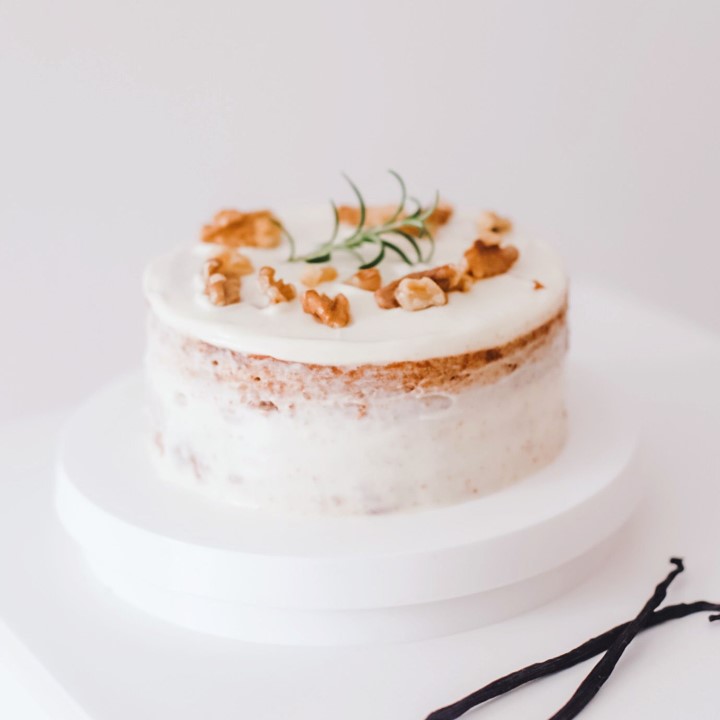
4. Where does vanilla come from?
Vanilla comes from the long bean-like pods of the climbing orchid, whose flowers are greenish-white briefly blooming and unscented. It doesn’t smell like vanilla. They have absolutely no fragrance. Orchid flowers only last for a day. Since the blooms last only one day, it’s important to pollinate them by hand on schedule. The beans ripen after 6 weeks of fertilization, but cannot be harvested for several more months.
When the vanilla beans are ripe, the farmer dips the beans in boiling hot water to stop them from ripening; they dry and process it using boxes, blankets, racks, and sweat ovens; and slowly cure it in the sun for six to nine months to lower the moisture content to around 30%.
The noble aroma and taste do not adorn the growing plant. Only when the seeds ferment into wrinkled brown pods and that famous strong aroma begins to fill the air. Like wine, chocolate and coffee, vanilla from each country has its own unique flavor profile and characteristics, due to the different climate, soil, curing methods and species of vanilla. For example, vanilla from Madagascar has a soft and sweet taste. Indonesian vanilla is known for its Smokey, earthy touch, along with sweet notes and Tahitian vanilla has fruity and flowery attributes.
5. What makes each vanilla bean so different and which one is the best?
This is a good question, especially considering how many varieties of vanilla there are. There are two main characteristics that determine the taste, appearance and aroma of vanilla beans:
Origin
Like fine wine, the location which the vanilla is grown plays a large role in the aroma and flavor profiles of a vanilla bean. This is due to each country having a geographic difference, unique method of curing and drying vanilla beans. So many unique curing processes results an equally large difference in flavors produced by the vanilla bean.
Variety
There are three main varieties of vanilla that are produced commercially. These include vanilla planifolia, vanilla tahitiensis, and vanilla pompona. Each variety has unique characteristics. The planifolia variety is grown throughout much of the world, from Indonesia to Mexico to Madagascar and is by far the most heavily produced. This variety is typically more round and plump compared to the other species. However, strong variations do exist. Vanilla tahitiensis, commonly referred to as “Tahitian Vanilla”, typically has a more floral aroma and flavor. While planifolia has sweet aroma and deep, dark, creamy flavor.
6. What is the best type of vanilla bean?
The “best” variety depends on your personal preference in flavor. Madagascar is the most popular type and Indonesian, Tahiti is a consistent favorite. Each type is slightly different:
Madagascar Vanilla – dark, rich, sweet and creamy
Indonesian Vanilla – smokey, bold, well balanced
Tahitian Vanilla – floral, cherry-chocolate
7. How do I store Vanilla Beans?
We are often asked; “What’s the best way to store vanilla beans and how long will they last?” Unlike the dry, crumbly vanilla beans you might receive from your local grocery store, our vanilla is oily, pliable and very fresh. High inventory turnover means your vanilla will be as fresh as possible. Unlike dry vanilla beans which are too expensive at your local grocery store, we take extra steps to preserve moisture and quality. By following our guide below, we can assure you that your vanilla will stay in tip-top shape for a very long time:
Unpacking
Our vanilla beans are shipped in either vacuum sealed or glass vial packages. If your vanilla arrives in vacuum sealed packaging, we suggest that you do not open the package until usage. We do recommend that you remove the beans from the package after open. Keep in mind that you might see a brown liquid throughout the vacuum sealed packaging. Do not be concerned for this liquid is simply oil squeezed from the vanilla beans during the vacuum sealing process.
Storage
Wrap your vanilla beans in wax paper and store in an airtight glass or Tupperware container. Be sure to squeeze out as much air as possible from the container to prevent the vanilla beans from drying out.
Location
You should never store your vanilla beans in the refrigerator. Refrigeration can cause excess moisture in Grade A Vanilla Beans to promote a particular type of mold specific to vanilla. We recommend storing your airtight container in a cool, dark place such as a pantry or basement.
Airing
Vanilla beans should be aired regularly. Simply remove the beans from the container every few weeks to circulate the air for approximately 10-15 minutes.
Life Span
Vanilla beans that have been stored correctly in ideal conditions can last upwards to two years. We recommend buying quantities that you intend on using within 6-8 months.
Dry or Moldy Vanilla Beans If your vanilla beans have dried out, you can re-hydrate them in either milk or warm water for several hours. If your vanilla beans appear to contain “frost”, do not mistake this as mold. Frosty Vanillin crystals can develop on vanilla beans as the vanillin inside the bean migrates to the surface while the beans dry. These crystals appear shiny and are edible. If you do suspect actual mold, please discard the vanilla beans.
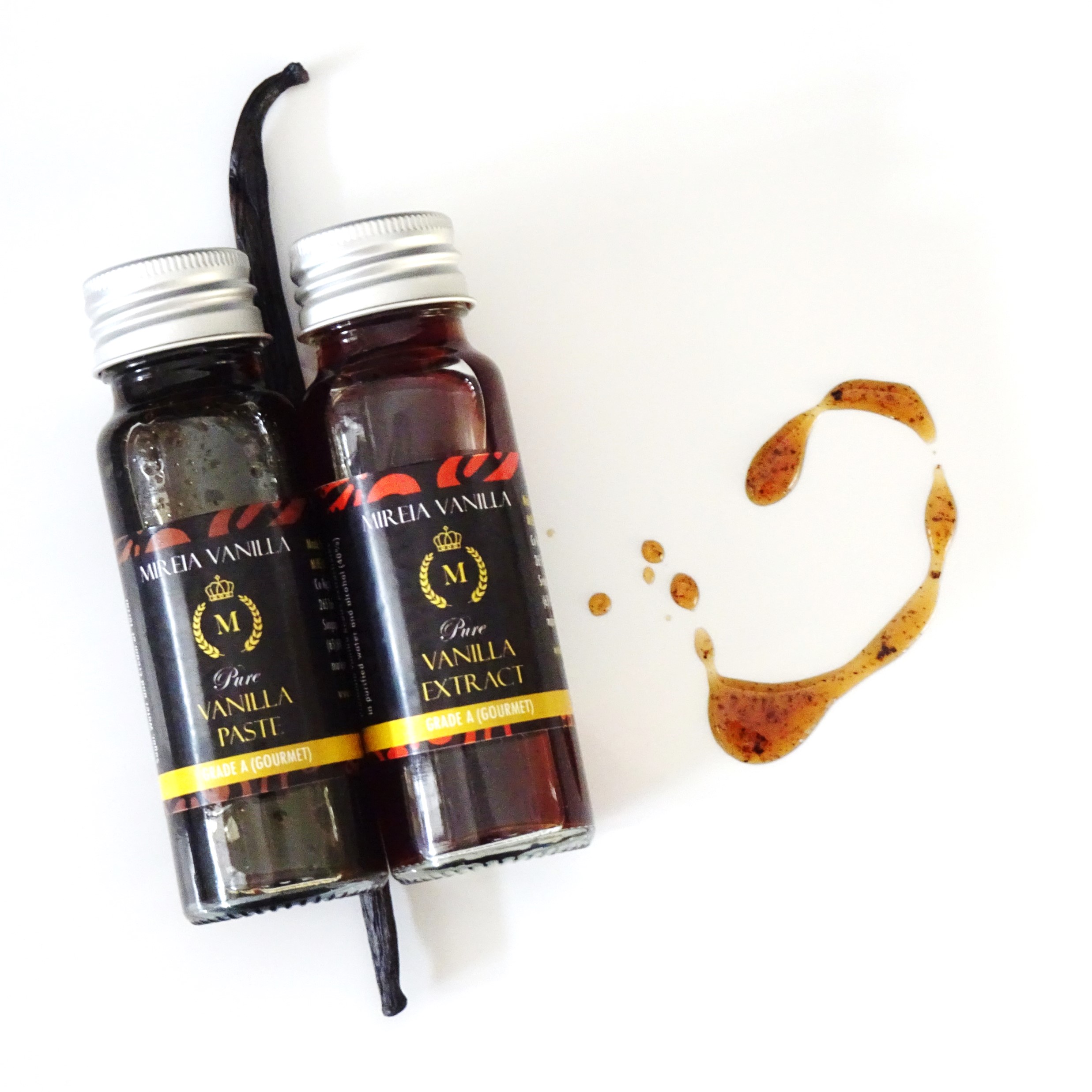
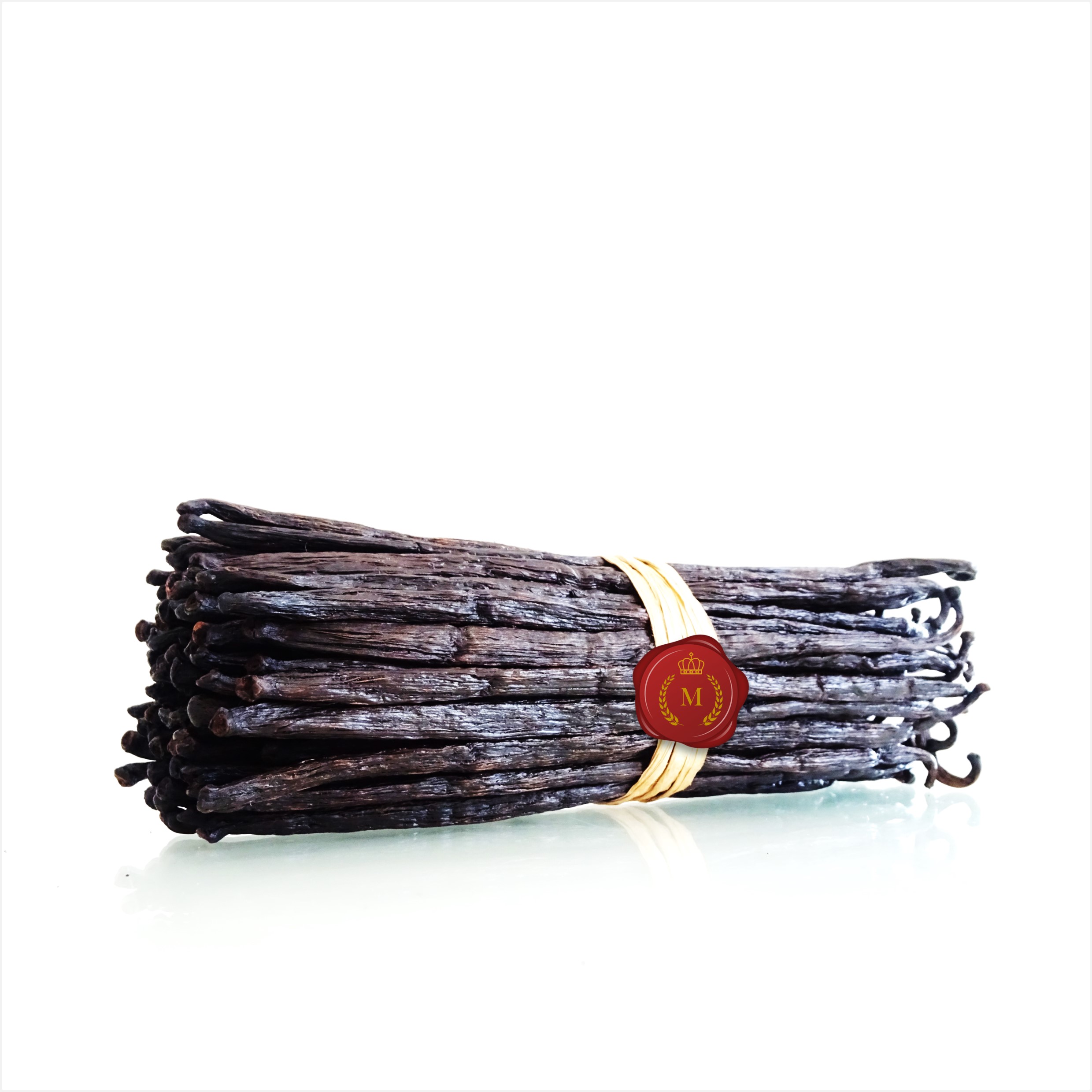
8. How do I use vanilla beans?
First time cooking with whole vanilla beans? No problem! This is the best way to use vanilla in its purest, unrefined state. To use vanilla beans, simply grab a cutting board and your favorite sharp knife. Cut each end of the vanilla bean. Next, cut the vanilla beans lengthwise. Don’t be afraid to use force here as vanilla beans can have tough skin. Now that the beans have been cut in half, it’s time to get the paste out of the vanilla beans. Hold your knife perpendicular to the nut and scrape it. Easy as that!
9. What is vanillin?
Vanillin is one of over 250 flavor compounds in vanilla. Several tests can isolate and measure the natural vanillin content of pure vanilla extract, making vanillin a useful quality indicator. The best vanillas have high levels of vanillin. Imitation vanilla extracts are made using artificial vanillin, which can be produced from by-products of paper and petrochemical manufacturing.
10. What is imitation vanilla extract made up of?
Imitation vanilla extracts are made using artificial vanillin, which can be produced from by-products of paper, coal, castoreum and petrochemical manufacturing
11. Why does vanilla extract contain alcohol?
Vanilla extract is required to contain 35% alcohol. Alcohol is the most effective way to extract the flavor from vanilla beans, and the alcohol will evaporate when heated during cooking or baking. A liquid vanilla product made without alcohol is called vanilla flavoring.
12. How does Bourbon vanilla differ from Tahitian vanilla?
Bourbon vanilla beans come from the fruit of the orchid variety vanilla planifolia, and are rich in the chemical compound vanillin, which, along with more than a hundred other organic compounds, contribute to its unique flavor profile. It is the flavor most associated with vanilla, which is used in vanilla ice cream and desserts.
Vanilla tahiti beans actually come from a completely different orchid plant variety, called vanilla tahitensis, which has very little vanillin content but is high in certain “anisyl” compounds, which give foods a more fruity or floral taste. Many pastry chefs like to use Tahitian vanilla in recipes like fruit tarts because of their exotic and lively taste.
13. What are coffee beans?
Coffee beans are “cherry” coffee beans; two seeds usually sprout inside each cherry. On the tree, the seeds are covered with a silver skin (the remaining development of the fruit, also called spermoderm). The silver shell is covered by a parchment (endocarp) shell, which is covered by a slimy layer (parenchyma), surrounded by a thin layer of pulp (mesocarp), all covered by an outer shell (exocarp). This coating must be removed prior to baking, although some silver shells will often stick together.
14. What is the difference between Arabica and Robusta?
All coffee beans come from plants in the genus Coffee. Although there are thousands of species of plants within this genus, with tremendous variance in size and shape, only two are of commercial importance: Coffee Arabica, and Coffee Canephora, the latter more commonly called Robusta, after a prime variety. A third species, Coffee Liberica has found some localized production in Liberia, but it is of minor significance in the global market.
Arabica is genetically distinct: it has four sets of chromosomes, whereas robusta, and liberica each have two.
Sensory descriptions
The taste of Arabica beans differ between varieties and growing regions-the same variety grown in different parts of the world will taste different. These taste notes can be as varied as berries (blueberry is often particularly noted in Ethiopian Harrar), earthy (a characteristic associated with Indian and Indonesian coffees,) citrus (common with Central Americans), or chocolate (see note on mocha).
On average, a robusta will be harsher. One importer likened a particularly bad origin to dung, though very fine robusta can, potentially, compare favorably to a quality arabica. Premium robusta are essentially reserved for espresso blends, where they are primarily used to greatly improve the crema and to add a certain bite to the shot. The difficulty is in finding an exceptional robusta; growers and processors are often not willing to dedicate as much effort to robusta as they are to arabica, since the only potential market is for those blends. Robusta is rarely sold straight; instead, in addition to premium robustas used in espresso blends, poor quality robustas may be added to freeze-dried coffees or to coffee-flavored frozen drinks where the sugar and cream overwhelm the off-notes. Robusta has notably more caffeine than arabica.
Production Conditions
In subtropical conditions, arabica best thrive at altitudes from as low as 1000 feet to about 4000 feet. Closer to the equator, coffee tends to thrive at higher altitudes, from 3500 feet up to 9500 feet, though the latter is exceptional, and the usual ceiling is closer to 6000 feet. Both frost and high heat can damage or kill the plants. Too much or too little rain can adversely affect fruit production; likewise, the soil must be moist but well-drained. Coffee plant naturally do well in well-lit but forest-shaded regions. Newer hybrids do well in full sun, but are controversial for other reasons (See what is “songbird friendly” coffee?) Arabica are not very resistant to insects or fungus, and there have been a few major scares where significant acreage was threatened by leaf rust (Hemileia vastatrix) or other pests. Lower altitude regions that aren’t as well suited to growing arabicas are nevertheless used to grow poorer quality examples; these are often carelessly handled and sometimes generically referred to as Brazils. This is not indicative of origin: “Brazils” are not necessarily grown in Brazil, a country that also produces high quality coffee.
Robustas do well at lower altitudes, are more disease resistant, and yield more fruit. As a result, the overall cost per pound is lower than arabica.
In General
Over sixty-five percent of the coffee grown throughout the world is arabica, but much of it is unexceptional. On its own, the label “arabica” is no assurance of quality: you will need to know much more about it and find a reputable retailer who can provide much more information, and who has sampled (“cupped”) each lot. As noted, although Brazil grows some excellent coffee, a sizeable portion of the arabica grown there is of quite poor quality, to the point where the coffee trade uses a particular term, “Rioy” (from Rio de Janeiro), to describe certain particularly harsh, pungent coffees.
As with most foods, although there are some objective factors, taste is ultimately subjective. While very few people will find Vietnamese robusta enjoyable, not everyone will agree that Jamaican Blue Mountain is the epitome of flavor. As a broad rule, all-arabica blends will considerably taste better, but a superior robusta may fare better than a poor quality arabica.
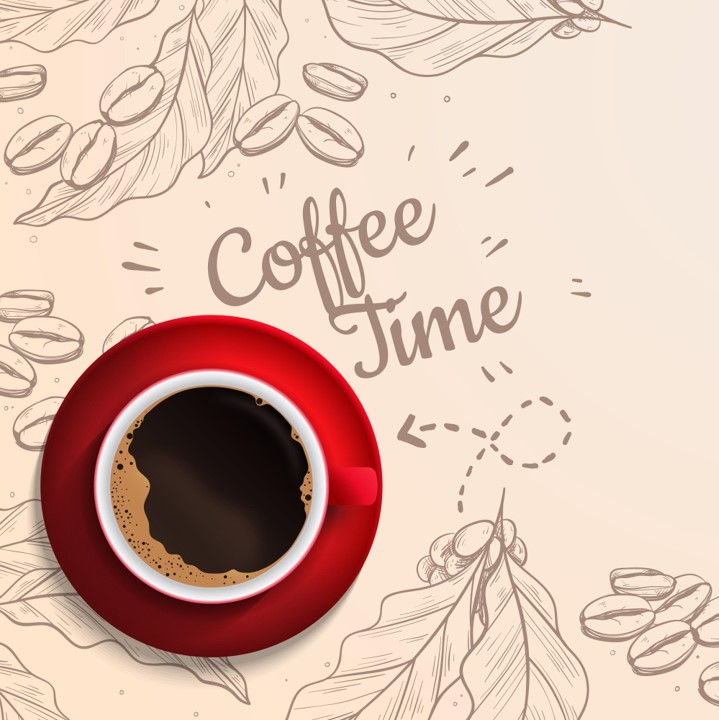
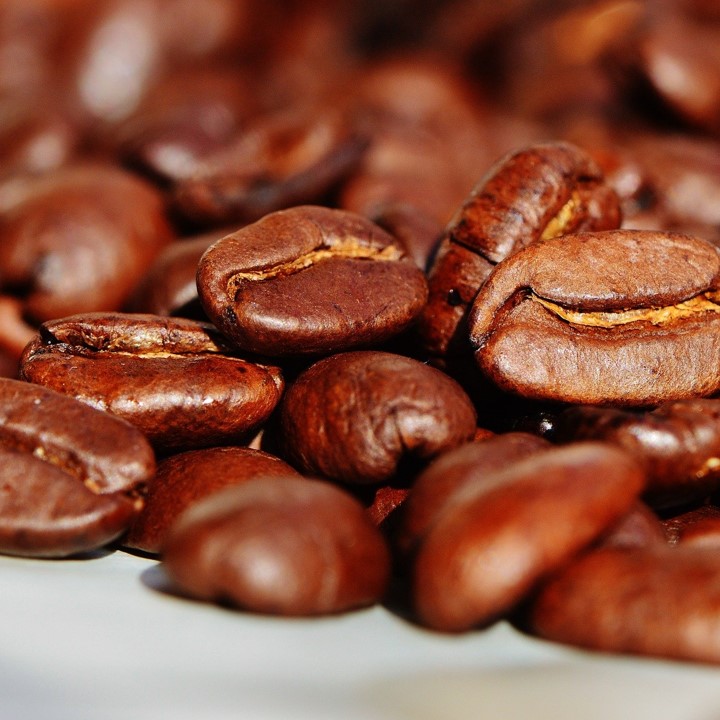
15. How important is the beans’ country of origin?
The coffee’s country of origin is largely a matter of subjective taste, and you will benefit by sampling a wide variety of origins and roasting styles. Origin is important in that the comparative bean flavor between growing regions, even within the same country, can be quite different. As a result, it is difficult to make sweeping generalizations about the coffees in any particular region.
16. What’s the difference between dry processing and wet processing?
This refers to how the pulp is removed from the bean.
Dry processing is the oldest method of processing coffee. The cherries are washed and then spread out on drying racks to dry in the sun for several weeks, or alternatively, are dried by machine. During this drying process, the pulp ferments, lending a particular taste to the bean. How the coffee is handled during drying-whether sun-dried coffee is protected against adverse weather or temperature, the machine driers’ temperature, etc.-effects the eventual quality and flavor of the bean. After the beans are dried, they are machine processed to remove the dried outer layers.
Wet processed beans have their outer skins removed by machine processing, then the fruit with the exposed pulp is allowed to ferment in tanks where bacteria and naturally occurring enzymes consume the pulp. The beans are then washed and dried, also either by sun or machine, and the dried beans are then milled to remove the remaining layers.
Some beans are semi-washed. The outer skins are removed, but the pulp is allowed to dry on the beans. The beans are then hulled as in the dry process, but the pulp is usually wetted as part of this step. Broadly put, many feel that dry processing enhances body and complexity, whereas wet processing enhances clarity and acidity. Semi-washed is an attempt to combine these enhancements.
17. Why are some coffees aged?
Unroasted coffee beans that are properly stored will change their taste profile. Acidity decreases and the perceived body deepens, while certain defects can become less apparent. Those coffees given the appellation “aged” are usually held for a number of years under carefully controlled conditions, and may have extraordinarily rich bodies. However, some aged coffees simply taste old and flat. Make sure you buy aged coffee from a reputable dealer who has sampled (“cupped”) that particular batch.
18. What is a monsooned coffee?
Monsooned coffees have been held in open-sided warehouses and exposed to the steady, damp monsoon winds. In a matter of weeks, the beans yellow, and gain a flavor reminiscent of, but distinct from aged coffees. By far the most common monsooned coffee is Indian monsooned Malabar. Again, buy from a retailer who is personally familiar with the particular batch of coffee you are considering purchasing. Monsooned coffee isn’t for everyone, but it should be sampled.
19. What is a “peaberry”?
The normal development of the coffee cherry creates two seeds, which grow with their flat sides facing each other. Infrequently, one seed fails to thrive and a single, round bean fills the available space. Often sorted out and sold separately, these single beans are known as “peaberries” and are technically mutant growths. Some in the coffee trade argue that peaberries have a richer, more concentrated flavor than normal beans, but others claim that they cannot discern a difference in a blind cupping. Today, the most famous peaberry is probably Tanzanian, where the plants seem more prone to producing peaberries than anywhere else. But you can often find peaberry-only versions of Kona, Kenyan AA, Java, and other types of “famous name” coffees if you shop around long enough at specialty coffee houses and online shops.
20. What are “espresso beans?”
Although frequently used to refer to a dark, oily roast, there really is no such thing as “espresso beans” or “espresso roast.” These names refer to different blends of coffee varieties and roasts, created with the intent of achieving an optimal espresso; no two blends are likely to be the same. Often, the goals are different: optimally, espresso intended for milk-based drinks will have different taste criteria than espresso intended to be drunk straight; the former needing aspects that can cut through the taste of the milk. Roasters will often have their own proprietary blends with closely guarded compositions.
21. What’s the best way to store coffee? How long will it stay fresh?
Once roasted, coffee begins to lose its flavor the longer it’s exposed to air and moisture. We recommend that you buy your coffee weekly, storing it in an airtight container in a cool, dark place and grinding it just before brewing. Coffee in an unopened FlavorLock™ bag will stay fresh for several months.
22. What kind of grind should I use?
For the freshest tasting coffee, we continue to recommend starting with whole beans and grinding them fresh for each pot. Or, if you prefer, you can take your whole bean coffee to your local retail store and ask them for a customized grind.
Drip makers perform best with either universal grind that is available in pre-ground coffees or with a grind specifically for a flat bottom or cone type filter. All Starbucks stores can grind coffee to this specification. Espresso machines are grind-sensitive and require a very fine grind, 30-35 seconds in a blade grinder. Slow and fast shots are often caused by a grind that is too fine or too coarse, frozen or refrigerated espresso beans and tamping coffee too hard or not firmly enough.
